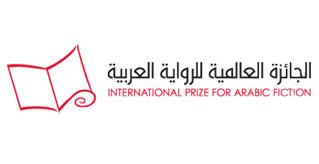Interview with longlisted author Mohammed Eissa Al-Mu’adab
03/02/2020

When did you start writing Hammam Dhahab and where did the inspiration for it come from?
I began writing Hammam Dhahab in January 2017. The first stage was conducting research at the Tunis library about the history of the Jewish minority community in Al-Hara district in ancient Tunis along with a Tunisian heritage research specialist. Then there was the stage of collecting live testimonials about the legend of the public bath. I was accompanied by a Jewish lady who informed me about the minutest details of the daily life of Jews. This was important in narrating the history of this minority group that witnessed a painful holocaust during the Second World War, and in narrating the harassment some Jewish families experienced in the Six-Day war by a few extremists, not a tolerant, moderate, peaceful people.
Hammam Dhahab comes as part of a trilogy entitled: Religions and the Place. The place is Tunis. After tackling Islam in the novel Soft Jihad published in 2017, I chronicled in the second novel the pains of Al-Qarana’s Jews who were expelled from Spain and Portugal and settled first in Livrono, Italy, before migrating to Tunisia around the seventeenth century after the death of the Grand Duke Ferdinand II. I had to combine history with magic realism so as not to repeat what was written about minorities.
I was inspired by the details of the events which is what distinguished the ancient city of Tunis: the beautiful life, the peaceful coexistence between Jews, Muslims and even Christians. I posed the most important question: why was Tunis so diverse, plural and coexistent with its different cultures and religions then, whereas now it has become an arena for hatred and exclusion of the other? Isn’t a Tunisian Jew the same as a Tunisian Muslim? In other words, extremism in Tunisia is that of a radicalized minority that does not represent the people of Tunisia which is known throughout history for its openness to other civilizations and religious coexistence.
Did the novel take long to write and where were you when you finished it?
Hammam Dhahab took two years of research and editing. The difficult part was of course the research, particularly as Tunisian history forgot or choose to overlook the painful history of the Jewish minority community. That’s why I had to search carefully and arduously so that my narrative is as close as possible to the circumstances lived by the Jews of Al-Qarana in Al-Hara district in Tunis City. During the search and editing, I used to travel about 90 kilometers between Tunis and my village, Saheb Al-Gabal, in the upper part of Tunisia. I finished the novel in my village.
How have readers and critics received it?
Honestly, the readers’ reception of the novel surprised me. It was as if they are thirsty for the forgotten history of the Jewish minority community in Al-Hara district in ancient Tunis. Tunisian historians did not narrate in depth this forgotten history. I will not hide that discussing Jewish minority groups in Tunisia is a controversial and risky issue given the topic’s sensitivity then and now. But I took the risk of broaching the topic which had to be done, and I waited for the violent and accusatory reactions which is what happened. The second thing that interested readers is the legend of the public bath. Until then the legend had been passed through scattered oral traditions and now documented by Hammam Dhahab based on several trusted narrators.
As for the critics, they heeded the deeply human themes of the novel, and here I mention Dalila Shaqron from the Faculty of Arts of Safakes, Tunisia who wrote a lengthy study about the novel entitled: “The historical and its symbolism in Hammam Dhahab.” Also, the Algerian Laila Bouakaz wrote a study “Hammam Dhahab or digging in history to build human relationships.” Other studies followed about the technicalities and themes tackled by the novel, particularly the theme of religious co-existence. There have been critical comparative studies in this regard.
What is your next project after this novel?
My next project is the third novel in the trilogy: Religions and the Place. In this new novel, I tell the story of a Spanish naval officer who defects from Franco’s regime for Benzert port in Tunisia along with thousands of Spaniards escaping the Spanish civil war and holocaust. While most of the runaways faced homeless, death and loss in the desert and at sea, the officer was an allegory to the soul of Jesus. With an iron will and a painful love for a girl who has left his life due to unfortunate circumstances, he managed, despite challenges, to create a unique miracle triggered by love, peaceful coexistence and triumph for man wherever he exists, regardless of culture or religion.
